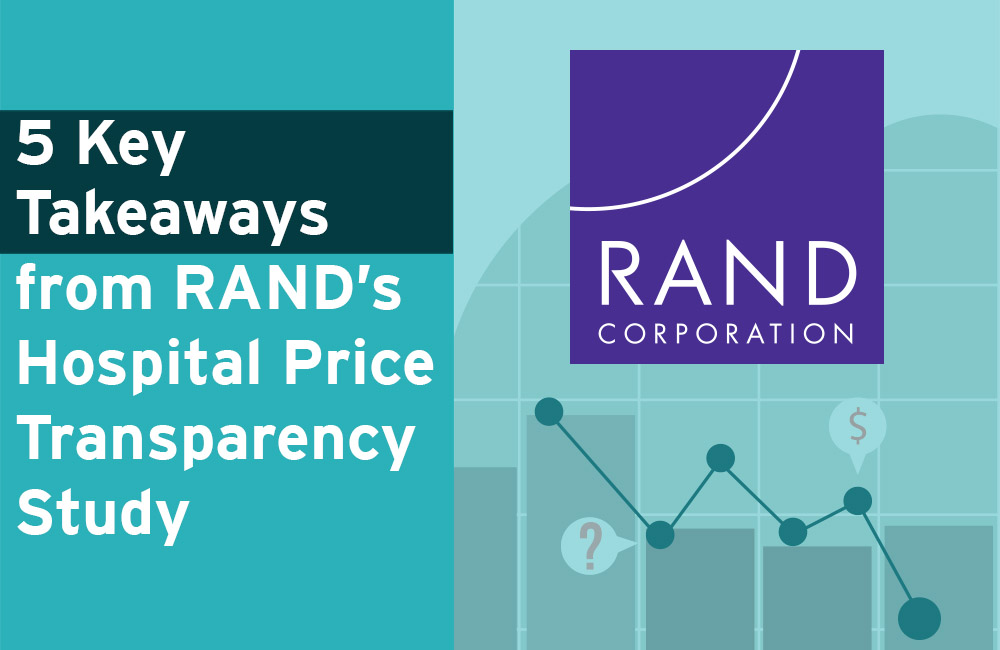
5 Key Takeaways from RAND Corp’s Hospital Price Transparency Study
The importance of hospital price transparency has come to the forefront for payors once again. Employer-sponsored health plans cover roughly half of all Americans. They account for $480 billion in hospital costs, and their cost has outpaced wages and inflation for over a decade.
As we’ve discussed, employers have a fiduciary responsibility to monitor healthcare spending to ensure their healthcare dollars are being used wisely. But how can self-funded plans fulfill fiduciary obligations without knowing prices?
We hosted Chris Whaley. External Link. Opens in new window., the lead policy researcher for RAND Corporation’s Hospital Price Transparency Study, at our 2022 Spring Symposium. At the event, he discussed the results of “RAND 4.0. External Link. Opens in new window.” to give employers the information they need to control healthcare prices and better serve their employees as responsible fiduciaries.
About RAND’s Hospital Price Transparency Study
RAND Corporation’s Hospital Price Transparency Study. External Link. Opens in new window. analyzed hospital price data between 2018-2020 from roughly 4,000 hospitals, 4,000 ambulatory surgery centers, and a dozen All-Payers Claims Databases (APCDs) – plus self-funded employers and health plans.
The prices listed are measured relative to a Medicare benchmark or a price per case-mix weight (standardized price).
Here’s What Employers Learned from the Hospital Price Transparency Study:
1) There’s a Wide Variation in Hospital Prices Across States
The relative price for inpatient and outpatient procedures varies widely between states, with Illinois paying 253% of Medicare and Wisconsin paying 307% – the 4th highest of all states.
There’s also a significant variation for different payers at the same hospital for the same service. For example, RAND analyzed hip replacements at one hospital and found commercially paid prices jumped from below $15,000 (the Medicare price) to over $85,000.
2) Facility Fees Are Higher than Professional Fees Nationally
Facility fees are payments that go to hospitals, while professional fees go to the physicians performing the service. Facility fees are markedly higher nationwide. However, Wisconsin ranks as the 2nd highest state for professional fees at 375% of Medicare. This makes hospital price transparency even more important to our members.
3) States with All-Payer Claims Databases (APCDs) Have More Hospital Price Transparency & Lower Prices
It makes sense that better hospital price transparency produces more competition and improved consumerism because it enables patients to “shop.”
Wisconsin has an APCD in the Wisconsin Health Information Organization (WHIO). Despite analyzing claims data from nearly 5 million citizens, WHIO’s effectiveness is limited for two reasons:
- It’s not publicly funded like many other APCDs
- The data WHIO receives is made on a voluntary basis. Until very recently. External Link. Opens in new window., hospital systems have not been incentivized to share their data
4) Ambulatory Surgery Centers (ASCs) Are Typically Priced Lower Than Hospitals
ASC prices adjusted for Medicare are consistently 40 to 50 percentage points lower than what hospitals charge commercial payers for the same services; among the top five most common procedures nationally, employers pay roughly 210% of Medicare at ASCs and 260% for those same procedures at hospitals.
But there’s also a wide variation of relative prices between ASCs at the state level. Many are priced at 100-200% of Medicare. However, Wisconsin ranks 4th highest at nearly 300% of Medicare.
5) Non-Private Patients Do Not Explain High Prices
Medicare, Medicaid, charity care, and uninsured patients – what hospitals sometimes refer to as “uncompensated care” – do not explain hospital prices based on RAND Corporation’s research. That being said, there is a correlation between hospital market share and hospital prices; hospitals with more market share charge higher prices.
That’s why, when it comes to hospital price transparency, just a 10% reduction in hospital market share could purportedly lower prices by $25 billion. External Link. Opens in new window. annually.
Fairer Prices Start with Improved Hospital Price Transparency
Self-funded employers cannot act as responsible fiduciaries for their employees without hospital price transparency. Rising healthcare costs place additional pressure on employers (and the wages they provide), especially during a pandemic. The wide variation in hospital price transparency nationally, and by state and region, presents a potential savings opportunity for employers. Still, they must demand hospital price transparency from providers.
The Alliance is pleased to have the opportunity to work with great brokers, consultants, and advisors to use that transparency of information to shape self-funded employers’ benefit plan design and change healthcare together.
We don’t know what the “right” price is for healthcare, but we believe that comparing prices to Medicare rates – which automatically adjusts for cost of living and wage differences – provides a great starting point for fairer prices. (And that’s why more than 90% of our contracts use Reference-Based Contracting by The Alliance®.)
Want to learn more about hospital price transparency? Read more.
To learn more about self-insured health plans, check out our Benefit Plan Design page.








